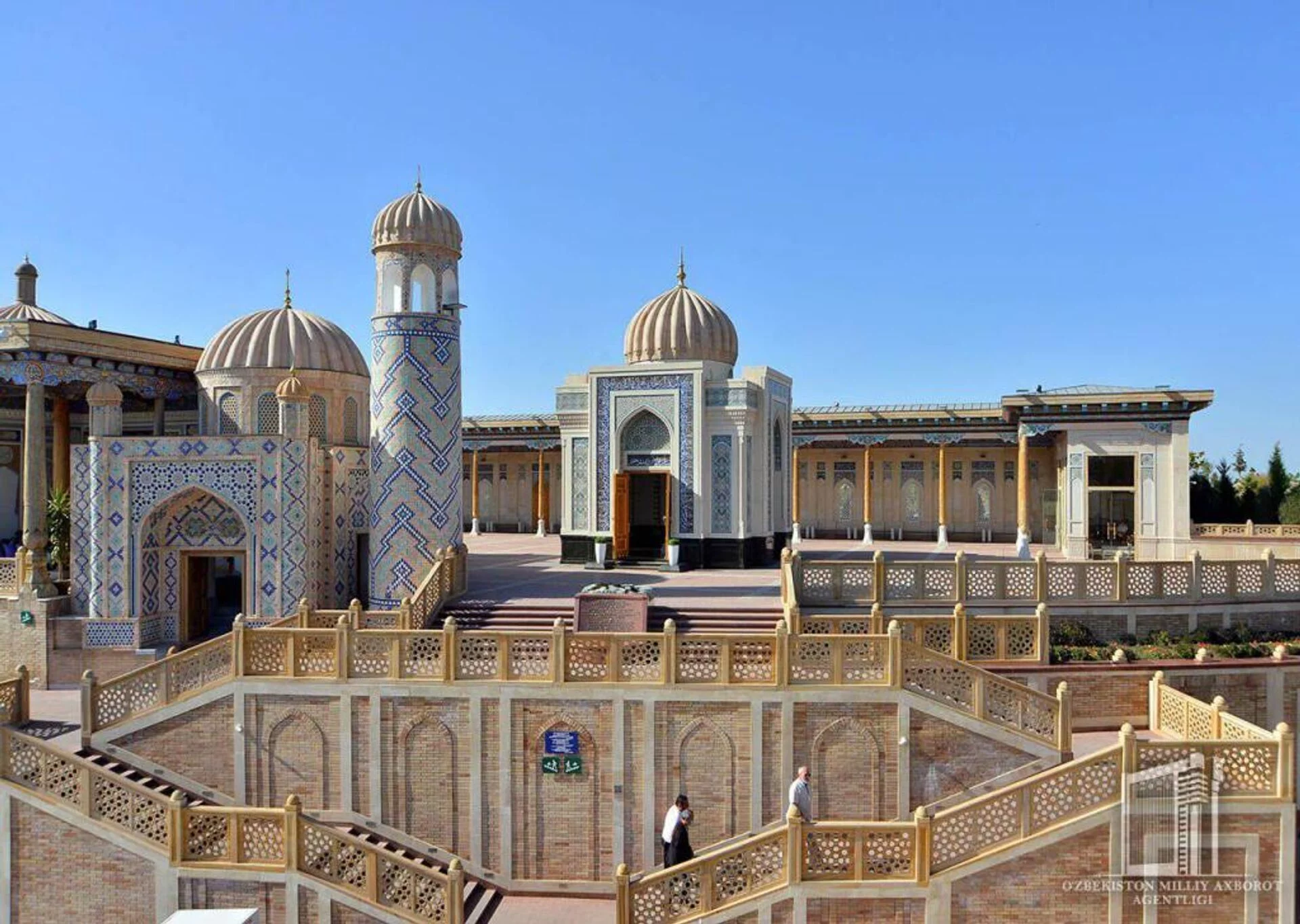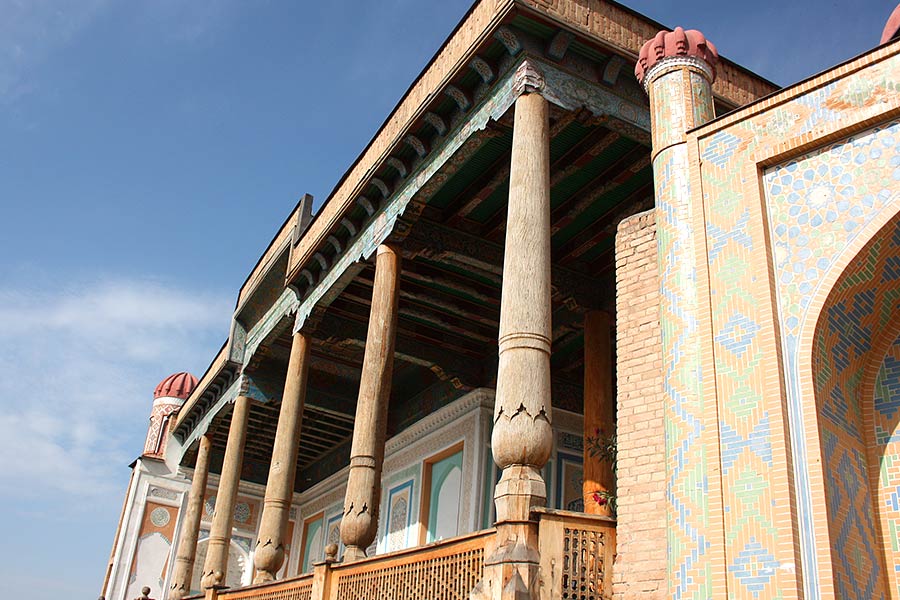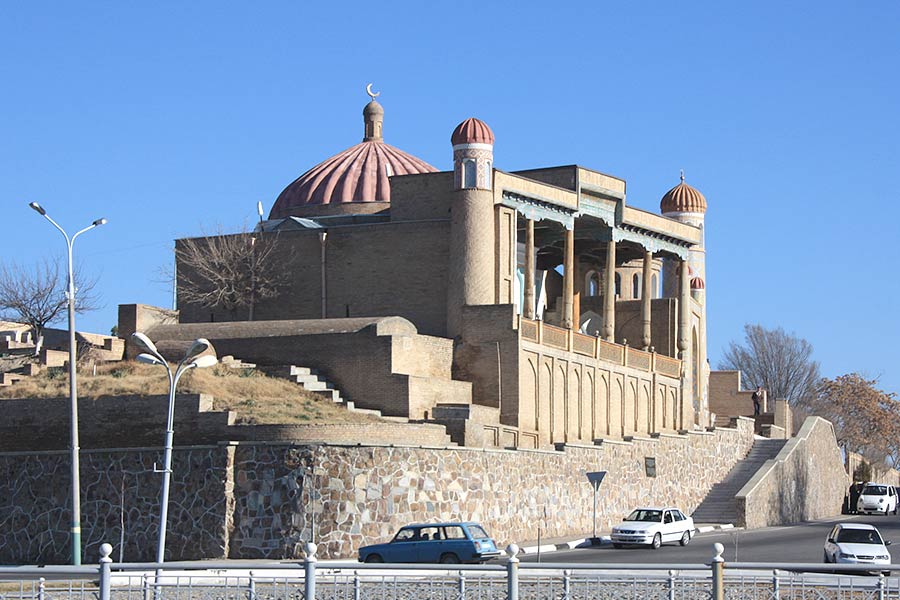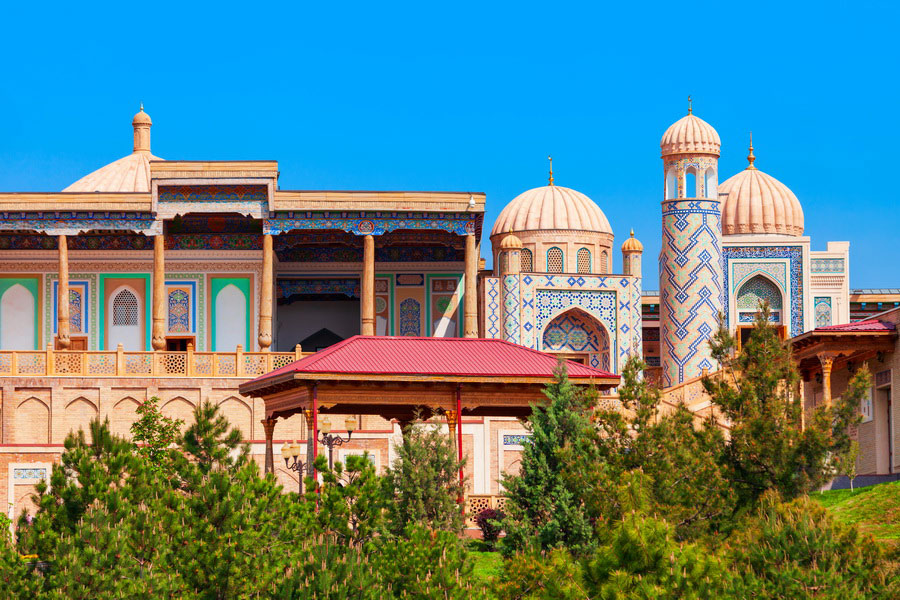Hazret-Khizr Mosque
The Hazret-Khizr Mosque (variants — Hazrat-Khizr, Khujah Khidr Mosque) is interesting and beautiful in its own way, it would be unforgivable to visit Uzbekistan and not see this magnificent structure.
The mosque, built in the early 19th century, is a prominent representative of the Central Asian architectural school of those times. A peculiar design solution, not inherent in the buildings of that era, makes the mosque building more attractive. Due to its relatively young age, the building has been preserved in excellent condition to the present.
Those who come to this place will be amazed by the majestic portal and the ivan with monumental columns, the cozy Sufi monastery (khanaka) will conquer and the filigree painting of the interior of the premises will not leave indifferent.
The history of the Hazret-Khizr Mosque
The history of the construction of the mosque, named after the Prophet Khizr, is also interesting. In ancient times, before the arrival of Islam in these desert places, people living in this area revered a certain elder, considering him the personification of immortality. In later times (XI century), one of the first mosques of Samarkand was built here, which, unfortunately, was destroyed during the invasion of the Mongol-Tatars. From this it is clear that, despite the relatively young age of the mosque by the standards of the centuries-old history of Samarkand, the neighborhood where it stands has quite deep historical roots. And, of course, like many ancient buildings, the mosque is shrouded in mysterious stories, curious legends and beliefs, which are told by the old-timers of these places.
The mosque, called Hazret-Khizr, built in the 19th century, towers over the ancient settlement of Afrasiab. Based on the excavations carried out in the Afrasiab area, historians and scientists have concluded that the current mosque building was built on the foundations of ancient religious buildings built in the 11th century. In ancient times, the local population came here to the prophet Khizr with requests for help to grow a good harvest, return from a long journey and many other household needs. In addition to religious buildings, beyond the boundaries of old Samarkand there were important objects for the life of the local population. For example, the ancient aqueduct (aqueduct) Argiz, whose system supplied the city with water.
Returning to the description of the mosque, which began functioning by the end of 1823, it should be noted that it was an integral part of the Shahi Zinda architectural complex, which includes, located nearby, the mausoleum of Kusama (cousin of the great Prophet Mohammed, revered by Muslims), who established Islam in Samarkand.
Architecture of the Hazret-Khizr Mosque
The architectural structure of the mosque building differs from the typical configuration of historical buildings in Samarkand. At the first glance at the majestic structure, attention is attracted by the high arched niche of the ivan, supported by powerful columns, luxuriously decorated with national ornaments. In the depths of the Sufi monastery, which has a strict square shape, there is a prayer mihrab pointing towards Mecca. There are two small prayer rooms on both sides of the khanaka.
But the true decoration of the mosque is considered to be the portals of darvazakhana of extraordinary beauty and the entrance gate decorated with delicate carvings. The beauty of the dome, decorated with amazing paintings, is indescribable. The interior of the building is filled with elegant wall paintings. Among the patterns, dates carved on the walls are distinguishable, indicating various historical events. The building of the eastern minaret stands nearby.























